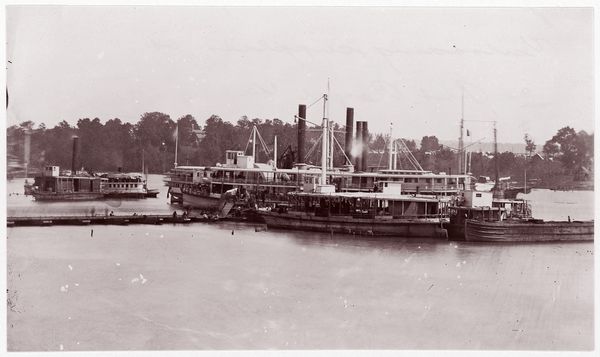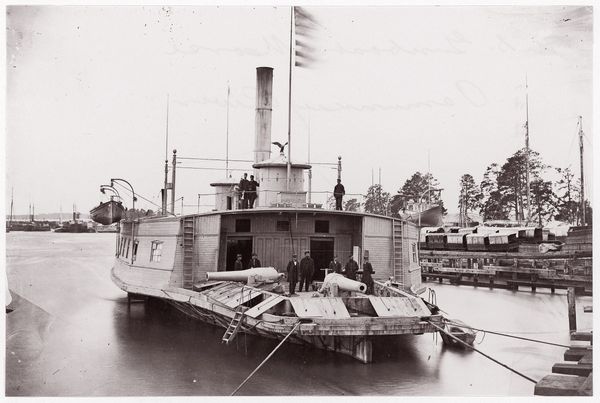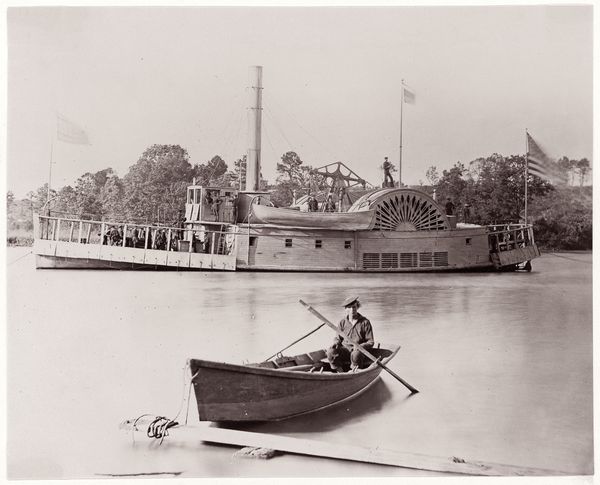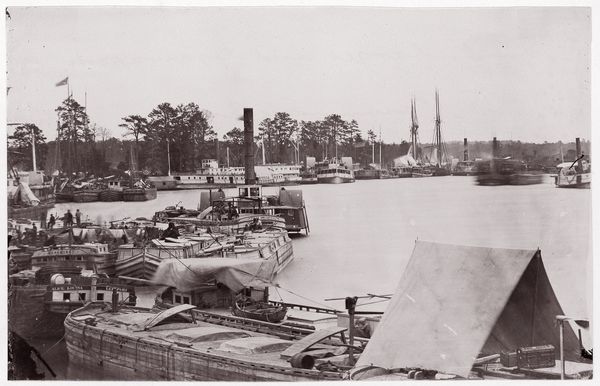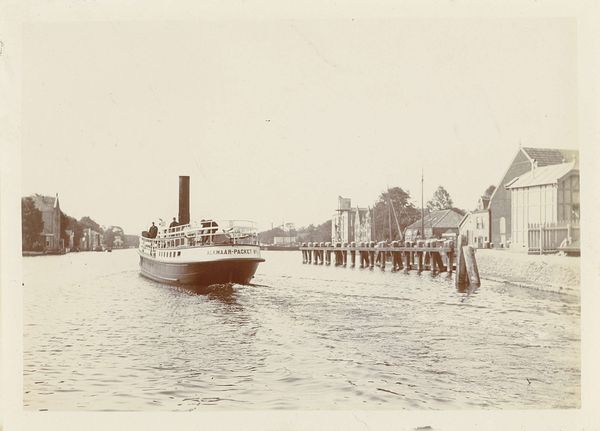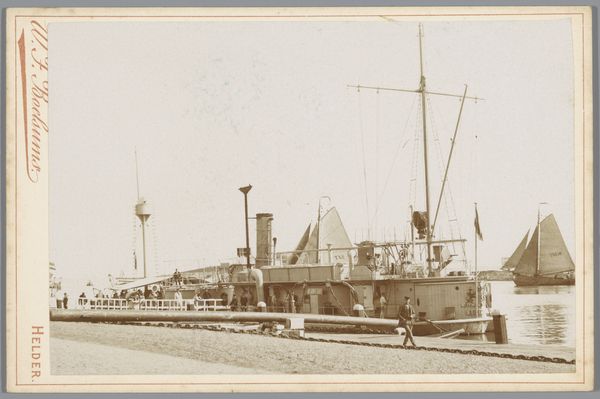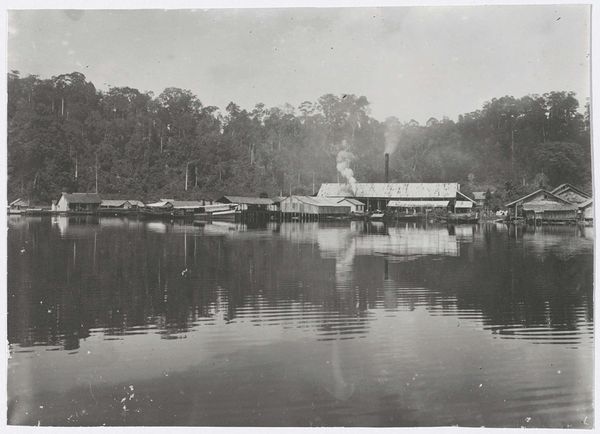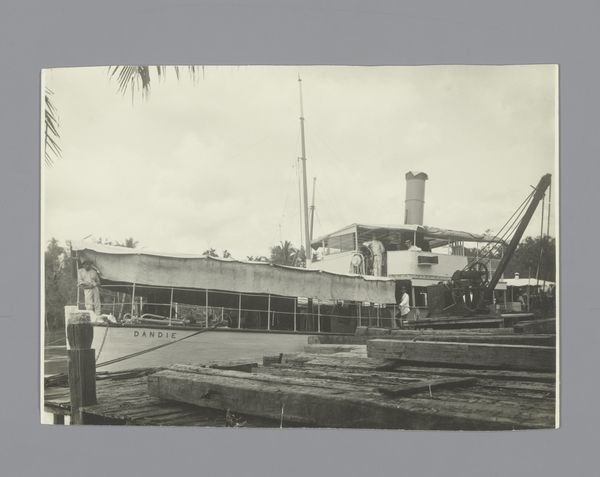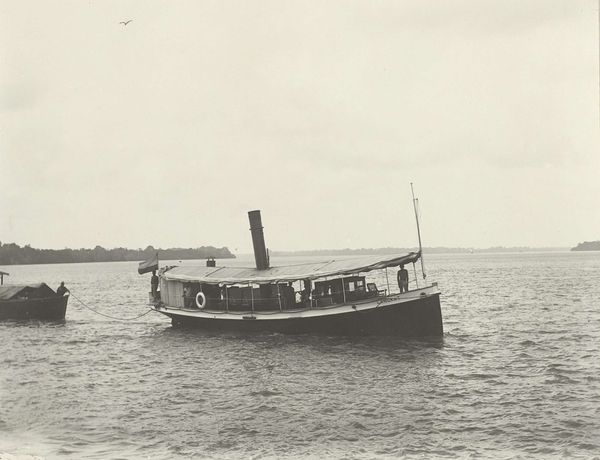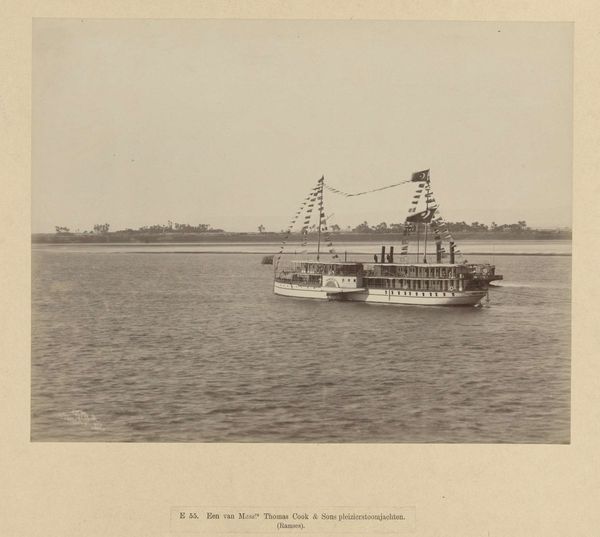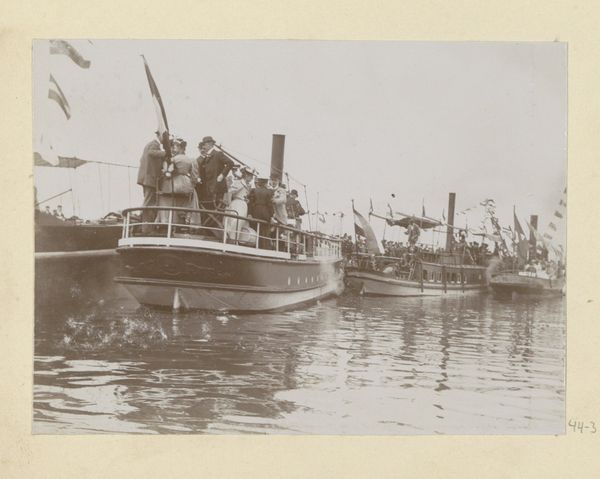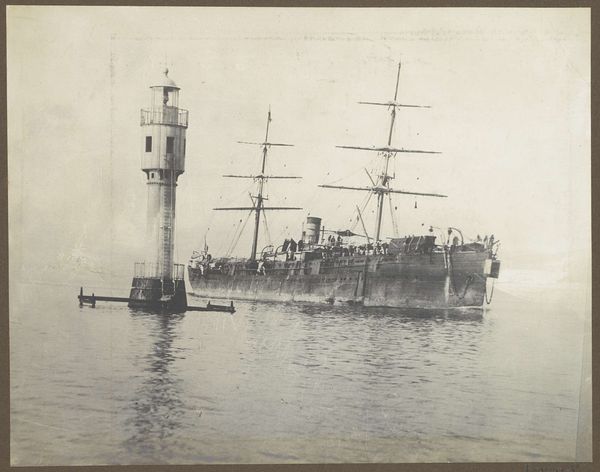
photography, gelatin-silver-print
#
black and white photography
#
landscape
#
river
#
photography
#
gelatin-silver-print
#
monochrome photography
#
history-painting
#
realism
#
monochrome
Copyright: Public Domain
Curator: What a beautifully composed photograph! There's a stillness despite the implied narrative. The stark blacks and whites, the linear architecture of the ship against the organic, softer textures of the river and foliage. It creates a fascinating visual dialogue. Editor: Yes, "Commodore Perry, Pamunkey River," taken sometime between 1861 and 1865 by Timothy O'Sullivan, now residing at the Metropolitan Museum of Art. It certainly speaks of its time. This gelatin-silver print presents a detailed, yet somewhat romanticized vision of Civil War-era naval activity. Curator: The placement is critical, I believe. See how the horizontal lines of the ship are mirrored in the river, bisected by the almost geometric triangular ripple created by the passing rowboat? And note that O’Sullivan positions the subject of the photograph, the Union vessel, along the golden ratio. Compositionally sound, in that regard. Editor: And historically rich. O'Sullivan was part of Mathew Brady's team, documenting the war. Think of the power this imagery would have held then! It served as a form of documentation, and arguably, propaganda. This is more than aesthetics, there is context surrounding it. It highlights the Union’s capabilities at the time and perhaps even attempts to control the narrative around the war and military strength. Curator: I'll concede that it transcends purely aesthetic appreciation, however the high contrast emphasizes a sharp clarity, almost clinical. Look at the subtle gradations in tone that separate the foliage from the stern form. There’s a level of control, a commitment to the formal image, the play of light and dark. Editor: Quite true, O’Sullivan creates a sense of balance. But isn’t the stillness unsettling? Consider the absence of actual conflict; we are left only with the implication. It offers, perhaps, a moment of quiet contemplation amidst chaos, a way for people far away to imagine the happenings of the war front without showing death. Curator: An image suspended in time, allowing the architecture to take the lead while reminding us about the political conditions in that time. The interplay of light and form creates tension that lingers. It forces us to really look at not only what the camera captured, but also the decisions behind the capture. Editor: Absolutely. Looking at this photograph from O'Sullivan now prompts questions about power, representation, and the very nature of historical documentation. Food for thought, indeed.
Comments
No comments
Be the first to comment and join the conversation on the ultimate creative platform.
